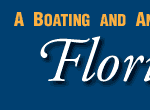CONTACT US:
Florida Fish and Wildlife
Conservation Commission
Fish and Wildlife
Research Institute
100 Eighth Avenue SE
St. Petersburg, Florida 33701
727-896-8626
|
|
|
Mote Marine Laboratory
Tropical Research Laboratory
24244 Overseas Hwy.
Summerland Key, FL 33042
305-745-2729
|
|
|

|
|
This project was funded in part by a grant awarded from Mote Marine Laboratory's Protect Our Reefs Grants Program, which is funded by proceeds from the sale of the Protect Our Reefs specialty license plate. Learn more at .
|
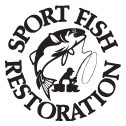
|
|
Additional funding for this project was obtained through the Federal Aid in Sport Fish Restoration Fund.
|
|
|
 |
Fish images © Diane Rome Peebles. Illustration provided for viewing purposes only.
Below is a small list of the popular sport fish caught in the Florida Keys.
Fish Identification: Often, sport fish look very similar and are hard to identify. This can be a problem when the regulations are different for each species or when species are protected from harvest. To help with the identification of similar species, the identification sheets below were developed and contain simple, easily seen identification keys that will anglers identify similar species. These sheets can be printed using a desktop printer and taken out on the next fishing trip.
Know Your Florida Fish: Groupers (PDF, 1.14 MB)
Know Your Florida Fish: Mackerels (PDF, 1.45 MB)
Know Your Florida Fish: Snappers (PDF, 1.07 MB)
|
 |
Red Drum (Redfish): Inshore near grass beds, oyster bars, and docks pilings; deeper channels during the warmest and coolest months |
 |
Snook: Canals, tidal creeks, and other deep warm waters in cool months; near tidal passes and mangrove fringe at high tide. |
 |
Spotted Seatrout (Speckled seatrout): Inshore over grass beds, sand, and sandy/mud bottoms; deeper water during warmest and coolest months. |
 |
Tarpon: Found mostly inshore near bridges, pilings, rock walls, harbors, around structures, and on flats. |
 |
Bonefish: Primarily and inshore fish; found in shallows often less than one foot deep, usually over lush grass flats, occasionally over white sand. |
 |
Spanish Mackerel: Inshore, nearshore, and offshore over grass beds and reefs |
 |
Cero Mackerel: Nearshore and offshore, especially over coral reefs and wrecks; common in south Florida. |
 |
King Mackerel (Kingfish): Nearshore and offshore; occasionally taken from piers running into deep water. |
 |
Wahoo: Offshore game fish associated with the Gulf Stream and blue water. |
 |
Sailfish: Offshore game fish associated with the Gulf Stream and blue water. |
 |
Red Grouper: Bottom dwelling fish associated with hardbottom; juveniles offshore along with adults greater than six years old; nearshore reefs |
 |
Black Grouper: Offshore species; adults associated with rocky bottoms, reef, and drop-off walls in water over 60 feet deep; young may occur inshore in shallow water |
 |
Gag Grouper: Adults offshore over rocks and reefs; juveniles occur in seagrass beds inshore |
 |
Goliath Grouper: Nearshore around docks, in deep holes on ledges; young often occur in estuaries especially around oyster bars; more abundant in southern Florida. Protected species closed to harvest. |
 |
Nassau Grouper: Range limited to south Florida. Smaller individuals are found nearshore, adults are found offshore on rocky reefs. Forms large spawwning aggregations. Protected species closed to harvest. |
 |
Crevalle Jack (Jack Crevalle): Common to both inshore waters and the open sea. |
 |
African Pompano: Young are found in the open ocean. Adults are found to depths of 180 ft., often associated with reefs, wrecks, and rock ledges. |
Back to Top
|
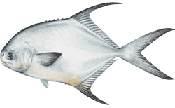 |
Permit: Offshore on wrecks and debris, inshore on grass flats, sand flats, and in channels; most abundant in south Florida |
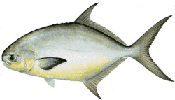 |
Florida Pompano: Inshore and nearshore waters, especially along sandy beaches, along oyster bars, and over grass beds, often in turbid water; may be found in water as deep as 130 ft. |
 |
Gray (Mangrove) Snapper: Juveniles inshore in tidal creeks, mangroves, and grass beds; adults generally nearshore or offshore on coral or rocky reefs. |
 |
Mutton Snapper: Inshore associated with grass beds, mangroves, and canals; larger adults found on offshore reefs. |
 |
Lane Snapper: Juveniles inshore over grass beds or shallow reefs; adults offshore; most common in south Florid.a |
 |
Yellowtail Snapper: Juveniles inshore over grass beds and back reefs; adults nearshore or offshore over sandy areas near reefs. |
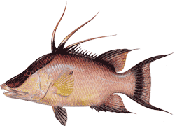 |
Hogfish (Hog snapper): commonly found over open bottoms and coral reefs at depths ranging from 10-100 feet (3-30m). |
 |
Spiny Lobster: Hardbottom, Seagrass, and coral reefs. |
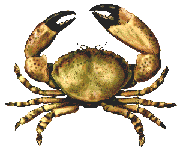 |
Stone Crab: Reefs and rocky areas, oyster bars in shallow to moderate deep areas. Stone crabs burrow on mud seagrass, or oyster beds. |
Back to Top
|
|
If you are out snorkeling, diving, fishing, paddling, or boating and see anything that may be unusual or out of the ordinary in Florida Keys waters, please record the location, date, and time, and contact the Marine Ecosystem Event Response and Assessment (MEERA) project. They can be reached by phone (305-395-8730), e-mail, or online.
If you have any questions, comments, or suggestions about this Web site, please e-mail us at Boating_Guides@MyFWC.com.
Would you like to receive notices of changes to this Web site and the Boating and Angling Guides to the Upper, Middle, or Lower Keys? If so, please e-mail us and include SUBSCRIBE-KEYS in the subject line.
|
|
